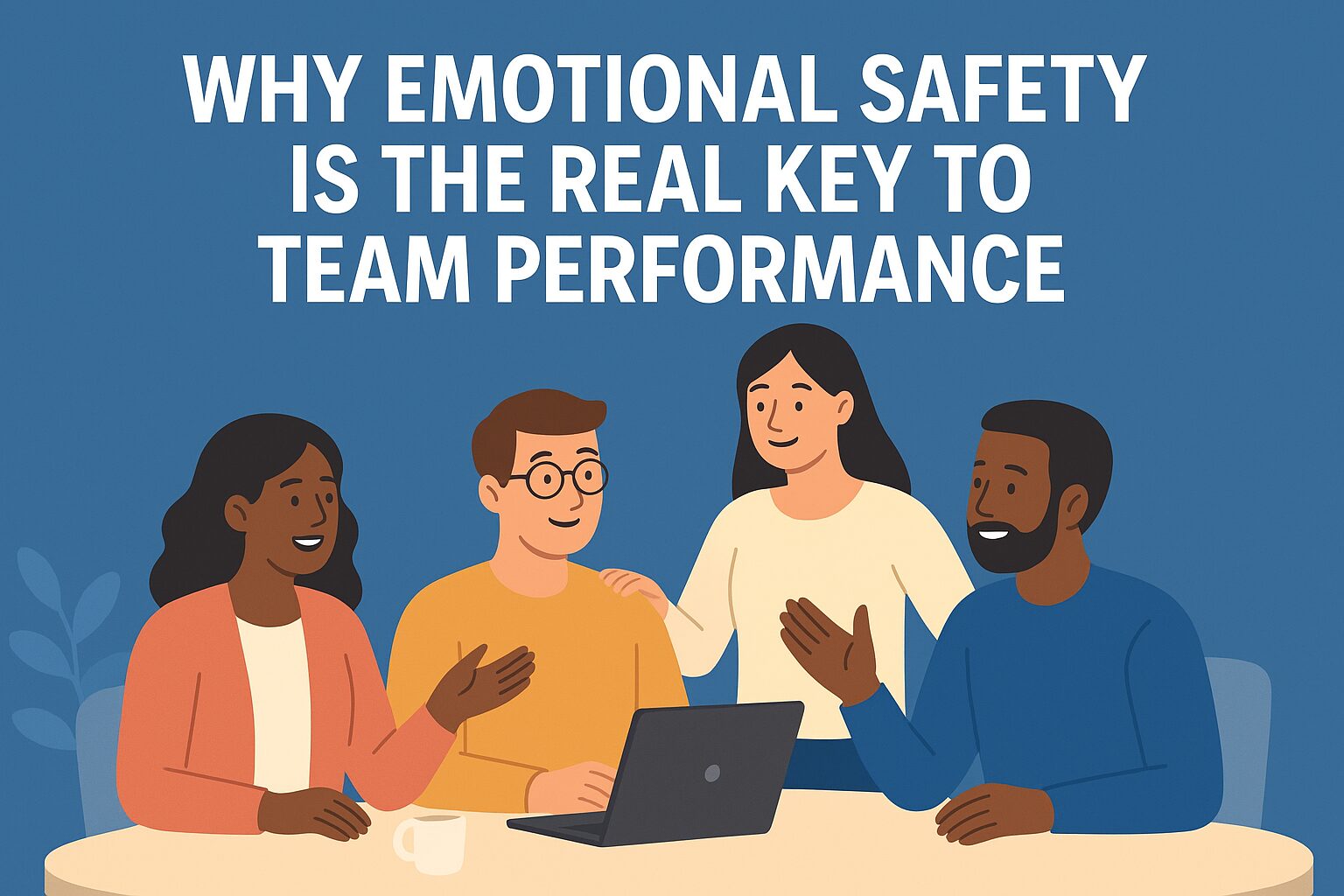In today’s competitive work environment, organizations are constantly searching for the secret to building high-performing teams. They invest in new technologies, implement productivity tools, and design incentive programs. Yet, despite these efforts, many teams fail to reach their full potential. The missing ingredient often isn’t more structure, better perks, or tighter deadlines—it’s emotional safety.
Emotional safety, sometimes referred to as psychological safety, is the shared belief within a team that members can express themselves without fear of judgment, ridicule, or punishment. It’s what allows people to speak up, take risks, and bring their full selves to work. When emotional safety is present, innovation flourishes, collaboration strengthens, and performance naturally rises.
What Is Emotional Safety in Teams?
Emotional safety is about creating an environment where employees feel respected, valued, and secure enough to share ideas, admit mistakes, or ask questions. In such a culture, no one fears that their contributions will be dismissed or that they will be penalized for making honest errors.
Harvard researcher Amy Edmondson first introduced the concept of psychological safety in the late 1990s. Her studies showed that teams with high levels of psychological safety outperformed others—not because they made fewer mistakes, but because they were more open about acknowledging and learning from those mistakes.
In simple terms, emotional safety means people trust that their workplace is a safe space to be vulnerable.
Why Emotional Safety Drives Team Performance
1. Encourages Open Communication
When team members feel emotionally safe, they are more likely to share their thoughts and ideas—even if those ideas are unconventional. This leads to richer brainstorming sessions, creative problem-solving, and diverse perspectives that push projects forward.
2. Builds Stronger Collaboration
Collaboration thrives in environments where individuals feel respected. Emotional safety reduces competitiveness and defensiveness within teams, replacing them with empathy, trust, and cooperation. As a result, people work together instead of against each other.
3. Fosters Innovation
Innovation requires risk-taking. Employees who fear ridicule or reprimand are less likely to experiment or propose new ideas. By contrast, emotionally safe teams embrace experimentation, knowing that even failed attempts provide valuable learning opportunities.
4. Improves Employee Engagement and Retention
People want to work in environments where they feel supported and understood. Emotional safety strengthens team morale, reduces stress, and increases job satisfaction. In turn, employees are more engaged and less likely to leave the organization.
5. Enhances Problem-Solving
Teams that practice emotional safety can address conflicts openly without fear of backlash. Instead of avoiding tough conversations, they tackle challenges head-on, leading to quicker resolutions and stronger outcomes.
How Leaders Can Create Emotional Safety
Building an emotionally safe workplace doesn’t happen overnight. It requires consistent effort and intentional leadership. Here are some proven strategies:
1. Lead by Example
Leaders must model vulnerability and authenticity. Admit when you don’t have all the answers, acknowledge your own mistakes, and be open to feedback. This signals to the team that imperfection is not only acceptable but also a path to growth.
2. Encourage Open Dialogue
Actively invite team members to share opinions, even dissenting ones. Create spaces where people can speak freely without fear of interruption or dismissal. Use phrases like, “That’s an interesting perspective—tell me more” to validate their input.
3. Normalize Mistakes as Learning Opportunities
Shift the culture from blame to learning. When mistakes occur, focus on identifying what went wrong and how to improve instead of punishing individuals. This mindset creates trust and continuous improvement.
4. Show Empathy and Respect
Take time to listen actively and respond thoughtfully. Acknowledge the emotions behind someone’s words, not just the words themselves. Respectful interactions build trust and demonstrate that everyone’s contributions matter.
5. Provide Constructive Feedback
Feedback is essential for growth, but it must be delivered thoughtfully. Frame feedback in terms of improvement, not criticism. For example, instead of saying, “This is wrong,” try, “Here’s a way we can make this even better.”
6. Celebrate Contributions
Recognize and celebrate individual and team achievements—both big and small. Public acknowledgment reinforces a sense of value and belonging, which strengthens emotional safety across the team.
Real-World Example: Google’s Project Aristotle
A prime example of emotional safety in action comes from Google’s Project Aristotle, a multi-year study on team effectiveness. Google found that the highest-performing teams weren’t necessarily the ones with the most talent or the strongest technical skills. Instead, they were the teams with the greatest sense of psychological safety. Members of these teams felt secure taking risks and speaking up, which directly translated into stronger collaboration and better results.
Final Thoughts
Emotional safety isn’t just a “soft skill” or a nice-to-have; it’s a strategic advantage. Without it, even the most talented teams can underperform due to fear, mistrust, or poor communication. With it, teams can thrive—bringing out creativity, collaboration, and resilience in ways that drive long-term success.
If you’re a leader looking to unlock your team’s full potential, start by asking yourself: “Do my people feel safe to speak up, share ideas, and take risks?” The answer to that question might reveal more about your team’s performance than any metric or productivity tool ever could.







